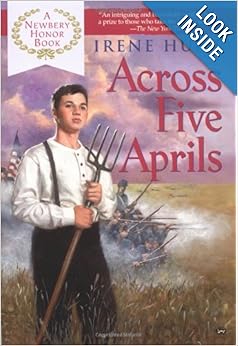 Technically, Nina: Adolescence is not historical fiction. It's
categorized as simply fiction. It's also not marketed as young adult fiction,
although the main character is fifteen. However, the time period takes place
around 1987, so those under the current drinking age might indeed consider it
historical fiction. Regardless, I read this beautiful story so I decided to
review it here. I purchased this book from the author, Amy Hassinger, at a
writing conference I attended last June.
Technically, Nina: Adolescence is not historical fiction. It's
categorized as simply fiction. It's also not marketed as young adult fiction,
although the main character is fifteen. However, the time period takes place
around 1987, so those under the current drinking age might indeed consider it
historical fiction. Regardless, I read this beautiful story so I decided to
review it here. I purchased this book from the author, Amy Hassinger, at a
writing conference I attended last June.
Nina: Adolescence tells the story of an
adolescent Nina who struggles with problems both relatively common (sexuality,
body changes) and relatively uncommon (little brother's death, adultery) for teens.
The story is told solely from Nina's point of view with no head-hopping and no
omniscience. I read this book in three sittings over a one week period so on the
can't-put-it-down-scale of one for I couldn't even finish it to
ten for I was up until the wee morning hours, I would give it an
eight.
The year of 1987 wasn’t referenced (or at
least I didn't pick it up) until about mid-book; however, I could tell it
wasn't contemporary by the mention of using the paper card catalog at the
library and the lack of mention of cell phones or computers. The story struck
me as someone looking back over her teen years, discovering how the past led
her to the choices she made, but showing that rather than stating it outright.
Nina is a compelling character and she ate
at me even when not reading; for the first time in a long, long time, I found
myself thinking about her between readings and I could read for two hours
feeling like it passed in an instant. I was only occasionally jolted back to
reality by my son's video games or the infrequent need to re-read a sentence.
The images in the book are startling; they are detailed but in a new way, more
detailed in the feeling rather than the tangible.
The themes of teenage depression and being
lost are universal so the uniqueness of this story was how they manifested. At
the end, Nina seems okay; she comes clean with her parents and starts
medication, leading me to question if it was a brain chemical imbalance causing
her problems all along. Therapy is mentioned but there are not a lot of details
about it, but do I even need those details? The reader knows the problems centered
around Nina dealing with her brother’s loss, exposure by her mother in her
paintings and over reliance on her until her mother didn’t need her any longer,
breakdown of her parents’ marriage, and the guilt over believing she was
responsible for her brother’s death. These are obvious, but I’m still wondering
about simply coming clean and getting on medication leading to her recovery.
But maybe that’s the way it is. I cannot attribute my recovery from teen
depression to any one thing; it was a just a gradual realization and decision
to live. Maybe one just spirals down as far as he or she can go so all there is
to do is to pick back up?
But these questions, these thoughts, these contemplations are what
I loved about this book. It made me think about my own life and human behavior.
There is no mystery in how what Nina experienced led to her choices and
suffering, but those experiences were not so clear to Nina or those around her
at the time. This book is not for those interested in vampires, werewolves, or
fantasies but those who want to think about and experience one perspective about
the real problems and falterings of the human mind.
Overall, the book was superb. I found the
writing quality, pace, plot, and characters excellent.
Source: Hassinger, Amy. 2003. Nina:
Adolescence. Blue Hen Books: New York.
